
This brief video describes the laws that govern gas properties (Boyle's Law, Charles' Law, and Avogadro's Law). Assessments for the student to complete after viewing the video and suggested supplemental resources are also included.

This brief video describes the laws that govern gas properties (Boyle's Law, Charles' Law, and Avogadro's Law). Assessments for the student to complete after viewing the video and suggested supplemental resources are also included.
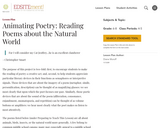
The purpose of this project is two-fold: first, to encourage students to make the reading of poetry a creative act; and, second, to help students appreciate particular literary devices in their functions as semaphores or interpretive signals. Those devices that are about the imagery of a poem (metaphor, simile, personification, description) can be thought of as magnifying glasses: we see most clearly that upon which the poet focuses our gaze. Similarly, those poetic devices that are about the sound of the poem (alliteration, consonance, enjambment, onomatopoeia, and repetition) can be thought of as volume buttons or amplifiers: we hear most clearly what the poet makes us listen to most attentively.
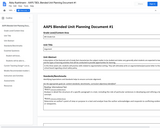
In this three week unit, students will practice skills related to argumentative writing. They will ultimately write an argumentative/persuasive letter to the school board regarding school safety policy.

In this lesson students work in collaborative groups to collect, represent, and interpret numerical data that they generate by using Sphero robots to knock down bowling pins!
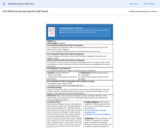
Students will learn to crop images to help them visualize and identify physical features that children inherit from parents.
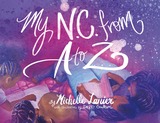
This lesson accompanies the North Carolina children's book, "My NC from A to Z" which celebrates pride of place, and creates connections to North Carolina's rich African American heritage. In this lesson, students will identify different genres of music by NC African American artists and diverse musical regions of North Carolina. Students will create a "train route map" to understand the Great Migration and how Raleigh was a key point of train departure. Students will retell biographies of select musicians and artists using the Great Migration as a backdrop for cross-cultural influences.

This video resource was developed by Neuroscience students of Wake Forest University. This video is designed for elementary students to introduce the parts of a neuron.

This video resource was developed by Neuroscience students of Wake Forest University. This video focuses on the parts of the eye and is designed for elementary students. There is an accompanying worksheet that can be completed by students as they view.
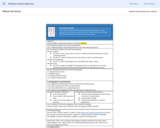
In this lesson, students use their knowledge of sound energy to create a soundproof box to protect a secret code word! Students measure and graph decibels to determine how well their boxes omit sounds!

This video resource was developed by Neuroscience students of Wake Forest University. This video is designed for elementary students. It describes the relationship between smell and taste.
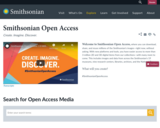
Welcome to Smithsonian Open Access, where you can explore and reuse millions of digital items from the Smithsonian’s collections (2.8 million at February 2020 launch). We have released these images and data into the public domain as Creative Commons Zero (CC0), meaning you can use, transform, and share our open access assets without asking permission from the Smithsonian.

This video resource was developed by Neuroscience students of Wake Forest University. This video is designed for high school students. It describes the concept of somatosensory reactions in the body and how they impact how we experience pain and impact our balance.
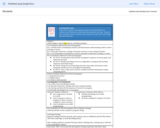
In this lesson students create large story maps to retell and familiar text. Students record themselves and place QR codes along the story map. Students then code Sphero Robots, dressed as main characters, to make their way through each part of the story.
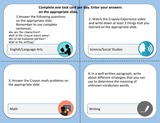
This remix includes a Google Slide template created by Erin Wolfhope with view only rights. Please make a copy of it to edit, and remix and share changes.Enclosed is a powerpoint that includes task card questions and answer spaces for the story, The Crayon Man: The True Story of the Invention of Crayola Crayons, by Natascha Biebow. Students can choose one or more task cards to complete at their technology center. Students will enter their answers on the appropriate slide.

This video resource was developed by Neuroscience students of Wake Forest University. This video is designed for middle or high school students. It describes the tongue.
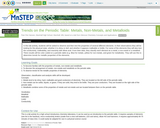
In this lab activity, students will be asked to observe and then test the properties of several different elements. In their observations they will be looking for the physical state, whether it is shiny or dull, and whether it appears malleable or brittle. For some of the elements they will also test the conductivity, malleability, and reactivity with dilute acid. From their data, they classify each element as a metal, a non-metal or a metalloid. Results will be color coded on a periodic table (e.g. Blue for metals, yellow for non-metals, and green for metalloids). They will use this to determine trends for metallic properties of the elements.

This video resource was developed by Neuroscience students of Wake Forest University. This video is designed for high school students and does contain some graphic images that might not be appropriate for younger students.
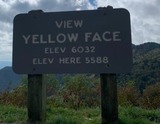
Travel through The Blue Ridge Mountains using a variety of media with your students and experience the fall foliage of North Carolina. This document has links to images, a movie in MP4 format, and a 360 photo that can be copied and could be used to put together a virtual tour in Thinglink to share with your students. Images of the original Thinglink are also included to make it easier to recreate.